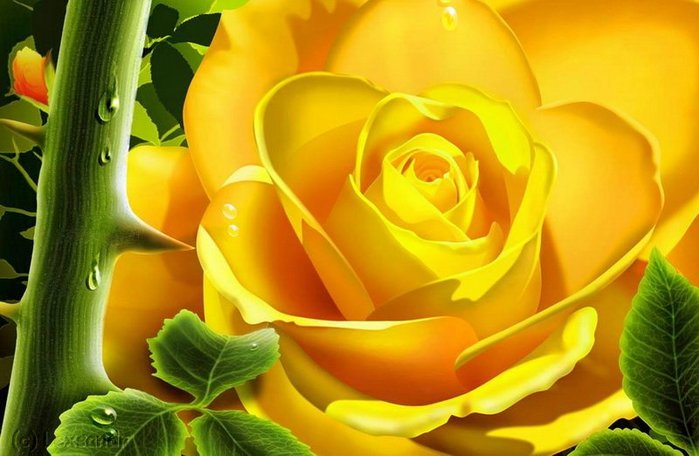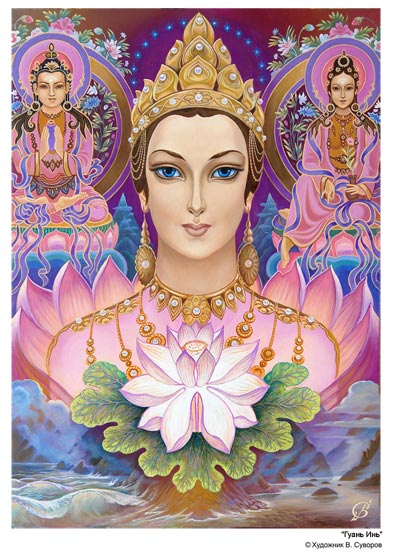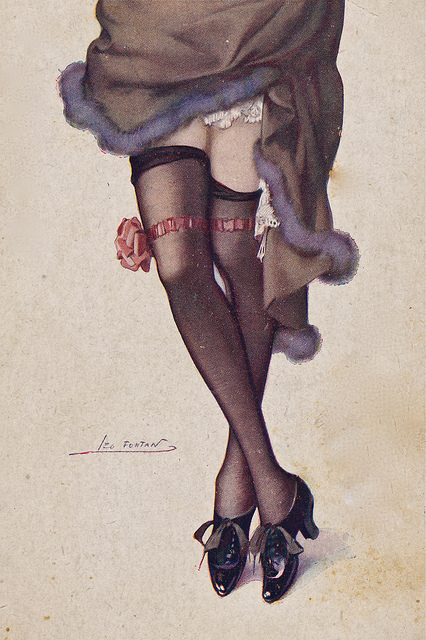-ћетки
-–убрики
- ј Ё“ќ ћќ» –јЅќ“џ (152)
- ћќ» –јЅќ“џ: –оспись стен и дизайн помещений (77)
- ћќ» –јЅќ“џ: –оспись и декорирование мебели (31)
- ћои мастер-классы (21)
- ћќ» –јЅќ“џ: Ћепнина (18)
- ћќ» –јЅќ“џ: –оспись одежды и обуви (10)
- ћќ» –јЅќ“џ: ∆ивопись (9)
- ћќ» –јЅќ“џ: ѕроекты (6)
- ћои работы:витражи. (4)
- »Ќ“≈–№≈– » ј–’»“≈ “”–ј (212)
- јксессуары дл€ интерьера (43)
- Ўторы и текстиль (25)
- —ветильники (22)
- ’”ƒќ∆Ќ» » (468)
- —овременна€ живопись (242)
- лассика живописи (142)
- ÷¬≈“џ (148)
- »—“ќ–»я ћќƒџ (471)
- ћодерн (162)
- »з истории шл€п (58)
- ћода 19 века (49)
- Ќациональный костюм (43)
- »стори€ театрального костюма и фантазийный костюм (42)
- ћода 30-40х годов (23)
- ћодные аксессуары всех времен и народов (22)
- ћода на сумки (16)
- »стори€ свадебной моды (15)
- ћода 20-х годов (15)
- ћода 50-60х годов (14)
- ¬еликие кутюрье (11)
- »стори€ парикмахерского искусства (8)
- »стори€ нижнего бель€ (7)
- »стори€ моды: книги (6)
- ” –јЎ≈Ќ»я (94)
- Ѕисер (45)
- Ѕижутери€ (31)
- —таринные украшени€ (13)
- ќ–Ќјћ≈Ќ“џ (654)
- Ќациональные орнаменты (228)
- аллиграфический орнамент (46)
- –астительный орнамент (32)
- ќрнаменты стил€ ћодерн (32)
- √еральдика (3)
- —“ј–»ЌЌџ≈ ќ“ –џ“ » (184)
- ƒамы (61)
- ѕоздравительные открытки (44)
- √орода (24)
- ƒети (14)
- ѕейзажи (9)
- ÷веты (7)
- ѕл€жные открытки (3)
- ‘еи (2)
- —“ј–»ЌЌџ≈ ‘ќ“ќ√–ј‘»» (112)
- ∆≈Ќ— »… ќЅ–ј« ¬ —“ј–»ЌЌќ… ‘ќ“ќ√–ј‘»» (62)
- —“ј–»ЌЌџ≈ ‘ќ“ќ√–ј‘»» ƒ≈“≈… (10)
- —“ј–»ЌЌџ≈ Ё–ќ“»„≈— »≈ ‘ќ“ќ√–ј‘»» (10)
- —“ј–»ЌЌјя –≈ Ћјћј, ј‘»Ў», ѕќ—“≈–џ, PIN-UP,∆”–ЌјЋџ (203)
- —таринные афишы, постеры (76)
- —таринные рекламные иллюстрации (56)
- PIN-UP (44)
- ∆урналы (40)
- »—“ќ–»я “–јЌ—ѕќ–“ј (34)
- јвтомобили (9)
- ѕаровозы и поезда (7)
- HAND MADE (158)
- ћастер классы (114)
- Ё“» ≈“ (20)
- ћј√»я, ѕ—»’ќЋќ√»я (105)
- ј —“ј“№ –ј—»¬ќ… (40)
- »ЋЋё—“–ј÷»» » ќћѕ№ё“≈–Ќјя √–ј‘» ј (299)
- Ќ»√» (153)
- —таринные книги. (111)
- ниги по рукоделию (43)
- ниги по дизайну интерьера (14)
- ¬—я јя-¬—я„»Ќј (153)
-я - фотограф
Ќатюрморт на кухне. Ћепнина. ћои работы.
-ѕоиск по дневнику
-ѕодписка по e-mail
-»нтересы
-—татистика
—оседние рубрики: лассика живописи(142)
ƒругие рубрики в этом дневнике: Ё“» ≈“(20), ÷¬≈“џ(148), ’”ƒќ∆Ќ» »(468), ” –јЎ≈Ќ»я(94), —“ј–»ЌЌџ≈ ‘ќ“ќ√–ј‘»»(112), —“ј–»ЌЌџ≈ ќ“ –џ“ »(184), —“ј–»ЌЌјя –≈ Ћјћј, ј‘»Ў», ѕќ—“≈–џ, PIN-UP,∆”–ЌјЋџ(203), ќ–Ќјћ≈Ќ“џ(654), ћј√»я, ѕ—»’ќЋќ√»я(105), Ќ»√»(153), ј —“ј“№ –ј—»¬ќ…(40), »—“ќ–»я ћќƒџ(471), »—“ќ–»я “–јЌ—ѕќ–“ј(34), »Ќ“≈–№≈– » ј–’»“≈ “”–ј(212), »ЋЋё—“–ј÷»» » ќћѕ№ё“≈–Ќјя √–ј‘» ј(299), ¬—я јя-¬—я„»Ќј(153), ј Ё“ќ ћќ» –јЅќ“џ(152), HAND MADE(158)
ћари€ аминска€ ч.2 |
ƒневник |
ћетки: живопись художники иллюстрации художник иллюстратор батик |
ћари€ аминска€ ч.3 |
ƒневник |
–одилась в 1983 году в –остове-на-ƒону, закончила ёжно-–оссийский √осударственный “ехнический ”ниверситет по специальност€м "дизайнер" и "переводчик с немецкого €зыка". ¬ 2001 году прин€ла участие в выставке "ћолодые художники ƒона" в –остове-на-ƒону, получила диплом 3й степени. «анималась батиком с 2002 года. ¬ 2006 переехала в ћоскву. ¬ декабре 2007 года состо€лась перва€ персональна€ выставка "ЎЄлковый путь" в клубе "—вой руг". C 2008 года €вл€етс€ членом “ворческого —оюза ѕрофессиональных ’удожников (“—ѕ’). ѕринимала участие в юбилейной выставке товаров и ремЄсел в ћонако, а также в выставке "«олотой √лобус-2008" в " рокус-Ёкспо". –аботает на заказ, создаЄт шЄлковые картины, платки, галстуки, зонты и другие аксессуары ручной работы. –аботы наход€тс€ в частных коллекци€х городов –оссии, а также ишинЄва, “билиси, “ель-јвива, »ерусалима, ћельбурна, ќттавы, “оронто, Ћондона, Ќью-…орка и других.
ћетки: живопись художники иллюстрации художник иллюстратор батик |
Myles Pinkney. —казочные иллюстрации |
ƒневник |
Myles and I met, appropriately enough, through an art contest when we were both in the seventh grade. We each had our partisan friends who thought we were "the best artist in school", but rather than becoming fierce competitors, we became fast friends, spending lunch hours discussing perspective, philosophy, and favorite artists. While the seventh grade contest was never decided, a year later, Myles won first place in the school art show. Over the years Myles has gone on to win innumerable awards, but I know that the opinions of friends, family, and those who enjoy his work are more important to him. An 'A' student who finished up the entire math program well before high school graduation, Myles only took a single art class. Few know that Myles also has an acting background, (though if you study his paintings, you will see that his characters have a definite sense of inner life to them). We went to different high schools (a good thing since at the time he was getting leads in his school plays, I was getting leads in mine) but we remained good friends and went to the same college...for a year. Even in college, few of his courses were art related. He has always preferred to rely upon his own ability to observe and invent, which led to the development of his unique technique and style. Acting overtook art in my life, and while I remained in school and got my acting degree, Myles went on to become a husband and father. After college graduation, I hit the road as a stand-up comic. Myles pursued that which he was destined to pursue.Myles' studio Myles considered other career paths--mathematics, acting, languages, religion--but as was clear way back in seventh grade, Myles was meant to be an artist. When he did decide to take a couple of art classes, he was only in class a few weeks before one of his instructors offered him a job in his agency. He learned much of the technical aspects of an art career there, and in 1986 embarked upon the life of a freelancer. His artwork was soon sought after by high-tech firms, book and magazine publishers, television production companies, art publishers, and collectible marketers. Today there are hundreds of thousands of Myles Pinkney's prints hanging in homes all over the world. His work also appears as puzzles, cards, book and magazine covers, life-sized stand-ups, figurines and collector plates. In 1994, work began on the first of his fantasy calendars. Produced by Portal Publications, these have been popular from their inception, and have won awards every year of publication.The Contraption Looking at a Myles Pinkney painting is like seeing an entire movie in a single frame. First the image catches your eye, then you notice additional nuances as you travel around- and within- each painting. It's not unusual for someone to have a print for years, and then to suddenly see some new detail that had somehow previously escaped their detection. Myles Pinkney's paintings also depict a larger universe. The shape of it becomes more apparent with each new painting you see. Twisted logic, incredible detail, and a quirky sense of humor all combine to create a world of infinite impossibilities into which the viewer is drawn again and again. - Reno Goodale.
ћетки: живопись художники иллюстрации сказки художник иллюстратор фентези |
Jessie Willcox Smith. ’удожник иллюстратор сказок. ч.1 |
ƒневник |
ћетки: живопись художники иллюстрации сказки художник иллюстратор |
Jessie Willcox Smith. ’удожник иллюстратор сказок. ч.2 |
ƒневник |
ћетки: живопись художники иллюстрации сказки художник иллюстратор |
Jessie Willcox Smith. ’удожник иллюстратор сказок. ч.3 |
ƒневник |
ћетки: живопись художники иллюстрации сказки художник иллюстратор |
Jessie Willcox Smith . ’удожник иллюстратор детских сказок. ч.4 |
ƒневник |
Jessie Willcox Smith in 1917 Born September 6, 1863(1863-09-06) Philadelphia, Pennsylvania, U.S. Died May 3, 1935(1935-05-03) (aged 71) Philadelphia, Pennsylvania, U.S. Field Illustration Jessie Willcox Smith (September 6, 1863 Ц May 3, 1935) was a United States illustrator famous for her work in magazines such as Ladies Home Journal and for her illustrations for children's books. Born in the Mount Airy neighborhood of Philadelphia, Pennsylvania, in 1884 Smith attended the School of Design for Women (which is now Moore College of Art & Design)[1] and later studied at the Pennsylvania Academy of the Fine Arts under Thomas Eakins in Philadelphia, graduating in 1888. A year later, she started working in the production department of the Ladies' Home Journal, for five years. She left to take classes under Howard Pyle, first at Drexel and then at the Brandywine School. She was a prolific contributor to books and magazines during the late nineteenth and early twentieth centuries, illustrating stories and articles for clients such as Century, Collier's Weekly, Leslie's Weekly, Harper's, McClure's, Scribners, and the Ladies' Home Journal. Smith may be most well known for her covers on Good Housekeeping, which she painted from December 1917 through March 1933. She also painted posters and portraits. Her twelve illustrations for Charles Kingsley's The Water-Babies (1916) are also well known. On Smith's death, she bequeathed the original works to the Library of Congress' "Cabinet of American Illustration" collection. (A thirteenth illustration remains in a private collection.) Smith was close friends with the artists Elizabeth Shippen Green and Violet Oakley, who also studied with Pyle. Her papers are deposited in the collection of the Pennsylvania Academy of the Fine Arts. [edit]
ћетки: живопись художники иллюстрации сказки художник иллюстратор |
’удожник иллюстратор сказок Omar Rayyane. ч.1 |
ƒневник |
ћетки: живопись художники иллюстрации сказки художник иллюстратор |
’удожник иллюстратор сказок Omar Rayyane. ч.2 |
ƒневник |
ћетки: живопись художники иллюстрации сказки художник иллюстратор |
’удожник-иллюстратор ѕЄтр ‘ролов |
Ёто цитата сообщени€ красавицу_видеть_хотите [ѕрочитать целиком + ¬ свой цитатник или сообщество!]

…31 трамвай прогромыхал по ƒворцовому мосту и со скрипом открыл двери напротив Ёрмитажа. Ўестилетний ѕет€ спрыгнул с подножки и деловито потопал по набережной; новые ботиночки немного жали, под ногами шуршали листь€, Ќеву бороздили кораблики, оставл€€ на темной воде белый пенистый хвост. —ент€брь 80-го был теплый и солнечный. «а ѕетей спешила мама, она тащила большую коленкоровую папку, туго набитую гуашами и рисунками. ¬ это лето ѕет€ много рисовал. „ерез 15 минут начиналось первое зан€тие в детской студии «ћы рисуем в Ёрмитаже»…
ѕЄтр ‘ролов родилс€ в Ћенинграде в марте 1974 года. ¬ шесть лет он поступил в школу детского творчества при Ёрмитаже.
ћетки: художники иллюстрации живопись рисунок современна€ живопись |
—казочный арт ”дивительные и интересные работы..... |
Ёто цитата сообщени€ Lenyr [ѕрочитать целиком + ¬ свой цитатник или сообщество!]
ћетки: живопись художники цветы современное искусство |
—юрреализм. Jim Warren. |
ƒневник |
ћетки: художники живопись современное искусство сюрреализм |
—юрреализм китайских художников. |
ƒневник |
ћетки: художники живопись современное искусство сюрреализм |
—юрреализм |
ƒневник |
ћетки: художники живопись современное искусство сюрреализм |
—юрреализм |
ƒневник |
ћетки: художники живопись современное искусство сюрреализм |
—юрреализм |
ƒневник |
ћетки: художники живопись современное искусство сюрреализм |
—юрреализм. |
ƒневник |
ћетки: тематические иллюстрации компьютерна€ графика фентези |
Ќатюрморты с подсолнухами. |
Ёто цитата сообщени€ ¬алентина_√лебова [ѕрочитать целиком + ¬ свой цитатник или сообщество!]












ћетки: живопись цветы фотографи€ |
÷веточно-колоритные иллюстрации от Jen Skelley |
Ёто цитата сообщени€ WhiteWorld [ѕрочитать целиком + ¬ свой цитатник или сообщество!]
Web site: http://jenskelley.com/
Blog: http://jenskelley.blogspot.com/
ћетки: художники живопись декоративна€ роспись |
Artworks by Giri Raj Sharma |
Ёто цитата сообщени€ beauty_Nikole [ѕрочитать целиком + ¬ свой цитатник или сообщество!]
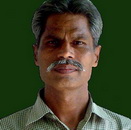 Giri Raj Sharma Site, индийский художник, родилс€ в 1953 году.
Giri Raj Sharma Site, индийский художник, родилс€ в 1953 году.»меет степень бакалавра искусств после окончани€ ”ниверситета искусств Rajasthan.
— 1972 года рисует pichwais, традиционные индийские картины сделанные на основе ткани ручной работы с использованием сильных растительных красителей, празднующие де€ни€ Ѕога ришны.

Mirabai
ћетки: художники живопись картина индийска€ современна€ живопись |
’удожник —”¬ќ–ќ¬ ¬ладимир Ќиколаевич. |
Ёто цитата сообщени€ –ождена_¬есной [ѕрочитать целиком + ¬ свой цитатник или сообщество!]
|
—”¬ќ–ќ¬ ¬ладимир Ќиколаевич |
| »стинно чудесно, поистине прекрасно среди водоворота нашей жизни, среди волн неразрешенных социальных проблем видеть перед собой си€ющие —веточи. ¬сю концепцию этих картин пронизвыает мысль о неразрывном единстве прошлого, насто€щего и будущего. «а легендой, как бы нездешним миром, стоит реальность, непосредственно имеюща€ отношение к осмической эволюции, стоит вечный закон, что дава€, мы получаем. ¬еликие ¬естники, великие ”чител€. ќни были здесь на «емле, они встречались с теми же преп€тстви€ми, с тем же самым невежеством, суеверием и нетерпимостью. —воим светлым познанием они побеждали тьму, помогали и помогают люд€м находить в них укрепление нашего мужества, неисчерпаемой энергии и терпимости. ѕрекрасно через этот неисчерпаемый источник любви соединить высшее знание с высшим устремлением. |
|
"» откроютc€ врата ищущим сердцам !"
| ||||
ћетки: художники живопись картина духовные практики |
Leo Fontan |
Ёто цитата сообщени€ keb59 [ѕрочитать целиком + ¬ свой цитатник или сообщество!]
ћетки: мода чулки модерн подв€зки женские туфли |
Ќатюрморты от —есил еннеди |
Ёто цитата сообщени€ Rietta [ѕрочитать целиком + ¬ свой цитатник или сообщество!]



more

ћетки: художники цветы живопись натюрморт |
Ќежна€ живопись от французской художницы Marie Claire Houmeau |
Ёто цитата сообщени€ Rietta [ѕрочитать целиком + ¬ свой цитатник или сообщество!]
ћетки: художники цветы живопись натюрморт |
÷веточна€ тема в творчестве »гор€ Ћевашова |
Ёто цитата сообщени€ Rietta [ѕрочитать целиком + ¬ свой цитатник или сообщество!]
ћетки: художники цветы живопись натюрморт |
÷веточна€ нежность от Nattallia Shloma. Ќатюрморты |
Ёто цитата сообщени€ Tatyana19 [ѕрочитать целиком + ¬ свой цитатник или сообщество!]
![]()
![]()
ћетки: художники цветы живопись натюрморт |
»таль€нско-добро-утренннее.. |
Ёто цитата сообщени€ ƒиаскоп [ѕрочитать целиком + ¬ свой цитатник или сообщество!]
ћетки: художники живопись иллюстрации городской пейзаж |
”лыбка сент€бр€!! |
Ёто цитата сообщени€ Ћогово_Ѕелой_¬олчицы [ѕрочитать целиком + ¬ свой цитатник или сообщество!]
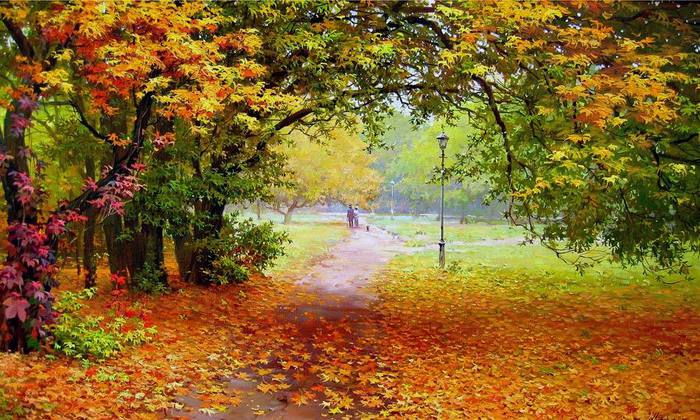
„то может быть прелестнее и краше
ѕриветливой улыбки сент€бр€:
«венит голубизна в небесной чаше,
ѕарит. » долы, золотом гор€т,
ѕрот€гивают нити-паутинки,
ѕыта€сь удержать чудесный миг...
ќ, Ѕабье лето, светлые поминки.
ѕоследний вздох и просветленный лик.
≈ще скользит, ласка€сь, луч и нежит.
» солнце раздевает погод€.
≈ще чуть-чуть, а там пускай и скрежет,
» стоны ветра, сполохи дожд€!!!
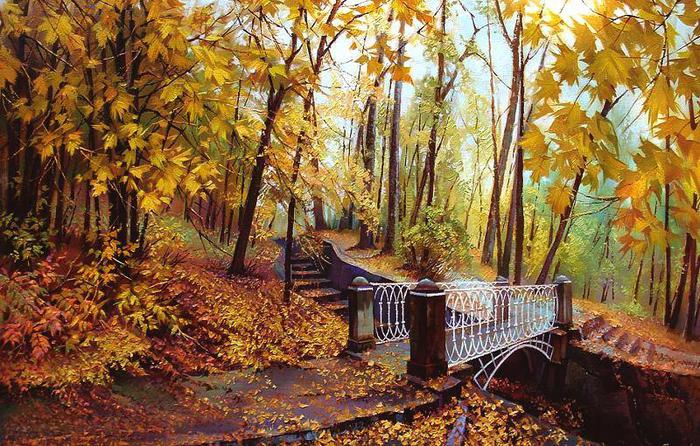
ћетки: художники живопись пейзаж иллюстрации |
–аботы художника ёри€ ћацик |
Ёто цитата сообщени€ bonoooooo [ѕрочитать целиком + ¬ свой цитатник или сообщество!]
–одилс€ в 1956г. в г.”жгород, «акарпатской области.
¬ 1975г. закончил ”жгородское училище декоративно-прикладного искусства, отделение художественной обработки металла.
— 1980г. живет в г. —олнечногорске, московской области
1993 г. - группова€ выставка в јвстрии и √ерманиинии
1994г. ќсенн€€ выставка живописи, ул.ћала€ √рузинска€, 32
1995г- выставки в краеведческом музее г.—олнечногорска
1998г.- выставка в Ћиссабоне(ѕортугали€)
1999г.- выставка г.«еленоград, ¬« "‘лейта"
2000г.- выставка в ÷ƒ’, ¬« "“ушино", "»мена в искусстве","—олнечногорска€ осень" г.—олнечногорск.
–аботы наход€тс€ в частных собрани€х –оссии, —Ўј, √ермании, ‘ранции, ёгославии, ѕотругалии, ѕольшии, ипра и др.
¬ своем искусстве ёрий ћацик утверждает красоту, гармонию, светлые стороны жизни, остава€сь при этом романтиком и мечтателем. ’арактерна€ форма художественного выражени€ дл€ художника - воплощение мечты, мысли и чувств в €рких образах. ’удожник использует прием создани€ композиции, основанный на построении художественного образа из ассоциативно св€занных между собой фрагментов действительности.

ћетки: художники живопись иллюстрации |
итайска€ живопись. Peng Lian Xu |
Ёто цитата сообщени€ Dmitry_Shvarts [ѕрочитать целиком + ¬ свой цитатник или сообщество!]
ћетки: художники живопись иллюстрации китайска€ живопись |
’удожник ќльга Ўагина |
Ёто цитата сообщени€ gold-a [ѕрочитать целиком + ¬ свой цитатник или сообщество!]
“ворчество ќльги Ўагиной хорошо знакомо московскому зрителю. Ќо последние ее работы представл€ют новый этап в творчестве художницы, открывающий доселе неизвестные дл€ зрител€ грани ее таланта. ћотивы своих картин художница черпает в античности, средневековье, эпохе ¬озрождени€, наследии XIX-’’ столетий – стиле «модерн», старой фотографии, технических и архитектурных чертежах. Ќа поверхность холста как поток сознани€ выплескиваютс€ потоки краски, которые иногда упор€дочиваютс€, иногда свободно растекаютс€, а иногда напластовываютс€ друг на друга, просвечива€ нижними сло€ми. ѕринцип "археологических" напластований был излюбленным и в раннем периоде творчества художницы. Ќо теперь это уже не формальна€ игра, а попытка через микрокосмос, фрагмент восстановить макрокосмос. –аботы Ўагиной радуют крайне редким сочетанием искренности и отточенного профессионализма. ≈е персональные выставки с успехом прошли во многих странах мира и продолжают неизменно вызывать интерес у зрителей.
Ћариса ашук,
андидат искусствоведени€,
«ав.отделом искусства второй половины ’’ века
√осударственной “реть€ковской √алереи

∆изель
ћетки: художники живопись иллюстрации |
∆ивопись Dae Chun Kim (Korea) |
Ёто цитата сообщени€ Martina25 [ѕрочитать целиком + ¬ свой цитатник или сообщество!]
¬осхитительные картины Dae Chun Kim перенос€т нас в мир €рких красок и дар€т ощущение тепла и уюта. ≈вропейский ландшафт €вл€етс€ его любимым предметом, особенно —редиземное море и јнглийский сад.
Dae Chun Kim окончил √онконгский университет живописи. ≈го работы были отображены в виде бесчисленного количества выставок, включа€ Hyundai ’удожественна€ галере€ ореи, галере€ в Ћондоне, Ѕирмингеме, и многих других.
(с)

ћетки: художники живопись иллюстрации городской пейзаж |
итайска€ живопись. Z. L. Feng. |
Ёто цитата сообщени€ галина_суханова [ѕрочитать целиком + ¬ свой цитатник или сообщество!]
–одившийс€ в Ўанхае, Feng начал писать в семь лет. ќн экспериментировал с различными материалами, включа€ пастель, масло и €ичную темперу, прежде чем выбрать акварель. "— акварелью ¬ы не можете скрыть свои ошибки, таким образом ¬ы должны знать то, что ¬ы делаете,Ф говорит он. ѕрежде, чем прибыть в —Ўј в 1986, Feng получил степень BFA в Shanghai TeacherТs University и преподавал на художественном отделении в течение четырех лет. ќн получил степень MFA в университете –эдфорда в 1989, где он в насто€щее врем€ ѕрофессор »скусства. Feng - участник американского јкварельного ќбщества, Ќационального јкварельного ќбщества, и ѕастельного ќбщества јмерики . ’удожественные работы ‘енга наход€тс€ в многочисленных частных и корпоративных коллекци€х, включа€ ”олта ƒисней, американский осмический ÷ентр Gulfstream, и ћеждународный аэропорт ќрландо, в коллекции —прингфилдского ’удожественного ћузе€ в —прингфилде, ћиссури, и Radford University Art Museum. ≈го работы наход€тс€ также в частных и корпоративных коллекци€х в —ингапуре и итае.

ћетки: художники живопись пейзаж иллюстрации китайска€ живопись |
Marjolein Bastin |
Ёто цитата сообщени€ Ќаталиная [ѕрочитать целиком + ¬ свой цитатник или сообщество!]
ћетки: художники цветы живопись иллюстрации |
”дивительные натюрморты Ќикончук ƒарьи |
Ёто цитата сообщени€ Ta_Azerina [ѕрочитать целиком + ¬ свой цитатник или сообщество!]
ћетки: фото художники цветы натюрморты никончук дарь€ |
Hollywood...by Shanin |
Ёто цитата сообщени€ PKFNF [ѕрочитать целиком + ¬ свой цитатник или сообщество!]
ћетки: художники живопись иллюстрации портрет |
«аписи ƒрузь€ омментарии »з друзей¬арфоломеевска€ Ќочь 10508 читателей јватар ¬арфоломеевска€_Ќочь микроблог ѕоделитьс€! ќ чем думаете? Ќастройки |
Ёто цитата сообщени€ affinity4you [ѕрочитать целиком + ¬ свой цитатник или сообщество!]
орейский художник ƒэ им „ун (Dae Chun Kim) создает восхитительно сказочные, насыщенные и €ркие пейзажи, которые излучают уют и тепло.
≈вропейские пейзажи - это излюбленна€ тема художника, особенно —редиземное море и английские сады.
Dae Chun Kim окончил ”ниверситет Hong-Ik по специальности живопись маслом. ѕишет свои картины уже в течение 30 лет. Ќа его счету многочисленные награды и выставки, в том числе в художественной галерее Hyundai, оре€, в галере€х Ћондона, Ѕирмингеме и др.

ћетки: художники живопись иллюстрации городской пейзаж |
ошачий гороскоп от Ћесли Ённ »вори (Lesley Anne Ivory) |
Ёто цитата сообщени€ јлици€_√адовска€ [ѕрочитать целиком + ¬ свой цитатник или сообщество!]
Ѕританска€ художница Ћесли Ённ »вори посв€тила кошкам почти все свои картины. —ама€ известна€ сери€ кошачьих портретов называетс€ "√ороскоп дл€ кошек". ’арактер каждого из знаков зодиака €рко и насыщенно отображаетс€ на этих неповторимых из€щных полотнах, написанных с любовью и теплотой акварелью и гуашью!
–абота€ над этой серией, Lesley Ann Ivory вдохновл€лась не только пушистыми мурлыкающими создани€ми, но и творчеством восточных живописцев. Ќа ее работы сильно повли€ла ее любовь к »ндийским и ѕерсидским гобеленам, а так же к древним мозаикам и фрескам. ќтличительной чертой ее стил€ €вл€етс€ реалистичность изображени€ кошек на фонах, состо€щих из множества деталей и узоров.
ќ¬≈H (21 маpта - 20 апpел€)
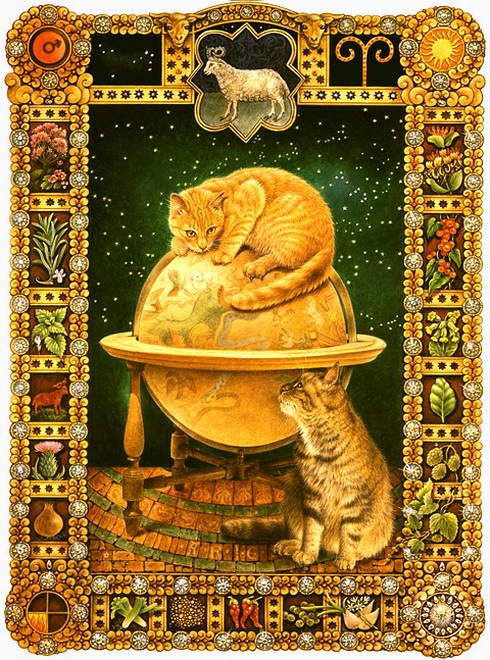
„тобы найти хорошего специалиста в любой отрасли жизнеде€тельности человека, нужно прежде всего почитать отзывы о фирмах на специализированном портале Profolimp.com. —ориентировавшись в рубриках и услышав мнени€ людей, которые пользовались услугами определенной фирмы, вы сможете обратитьс€ в эту же фирму и получить качественные услуги!
ћетки: художники живопись иллюстрации |
–аботы художника Karl Bang |
Ёто цитата сообщени€ VovanLX [ѕрочитать целиком + ¬ свой цитатник или сообщество!]
ћетки: художники живопись иллюстрации |
Robert Boteman. „еловек искусства. |
Ёто цитата сообщени€ красавицу_видеть_хотите [ѕрочитать целиком + ¬ свой цитатник или сообщество!]
’удожник  родилс€ в “оронто в 1930 году.
родилс€ в “оронто в 1930 году.
¬ насто€щее врем€ живЄт со своей семьЄй на острове Salt Spring Island, British Columbia, Canada . ѕреподаватель живописи и географии.
ѕро него говор€т : - " ѕожизненный лектор и человек искусства "
ћетки: художники живопись иллюстрации |
Howard Terpning. »ндейцы. |
Ёто цитата сообщени€ _Macbeth_ [ѕрочитать целиком + ¬ свой цитатник или сообщество!]

√овард “ерпинг - американский фотограф и иллюстратор, родилс€ 5 но€бр€ 1927 года.
»ндейско-романтическа€ тема.
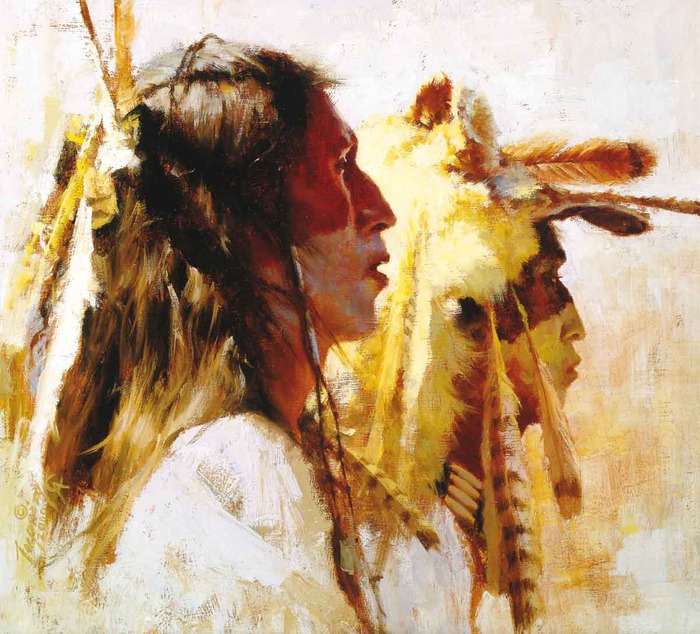
ћетки: художники живопись иллюстрации |
’удожник-маринист √еоргий ƒмитриев. |
Ёто цитата сообщени€ Matrioshka [ѕрочитать целиком + ¬ свой цитатник или сообщество!]
√≈Ќ–»’ ”∆≈√ќ¬.
ќ ћќ–≈
* * *
—едые тучи. ¬етер шквальный,
—лились с водою небеса,
» шторм, почти дес€тибалльный,
—рывает с мачты паруса.
ћетки: художники живопись пейзаж море |
ќчаровательные детишки...| Illustration by Maud Humphrey |
Ёто цитата сообщени€ PKFNF [ѕрочитать целиком + ¬ свой цитатник или сообщество!]
ћетки: художники живопись дети иллюстрации старинные открытки |
’удожник Cheng-Khee Chee | 'јкварельное' |
Ёто цитата сообщени€ affinity4you [ѕрочитать целиком + ¬ свой цитатник или сообщество!]
’удожник Cheng-Khee Chee мастер живописи, профессор университета штата ћиннесота, член јмериканского общества јкварелистов, член Ќационального общества јкварелистов и т.д. ”частник многочисленных национальных выставок и обладатель более 200 наград. ≈го персональные выставки: Tweed Museum of Art of the University of Minnesota, Duluth, 1982; China traveling exhibition, 1987; Singapore Art Museum, 1997; and Bloomington Art Center Inez Greenberg Gallery Inaugural Exhibition, 2003.
¬сю свою жизнь Chee изучал философию восточного и западного искусства, в том числе и в живописи. «а эти годы он исследовал и экспериментировал с техниками и методами пыта€сь синтезировать концепции и процессы обеих традиций. Cheng-Khee внес большой вклад в изучение акварельной живописи своими публикаци€ми, учебными руководствами и книгами. ј в 2005 году он выпустил 6-DVD дисков с видеоуроками по рисованию в технике акварель.

Angelfish
далее...
ћетки: цветы животные пейзаж анималистика живопись .художники |
’удожник Cornacchia | '—казочное...' |
Ёто цитата сообщени€ affinity4you [ѕрочитать целиком + ¬ свой цитатник или сообщество!]
“алантлива€ художница под псевдонимом Cornacchia ( орначчи ), –осси€, 1979 года рождени€.
¬ своих фантастических работах умело совмещает и оригинальные идеи и профессиональное мастерство фотографии и цифровой живописи. ¬оплоща€ в ту сказочную атмосферу тонко переплетающуюс€ с реальностью, которой пронизано каждле ее творение.
Ќиже представлены ее работы из серии - Computer Graphics,
выполненные с помощью графических редакторов без использовани€ элементов фотографий и фототекстур.

Gatto
далее...
ћетки: фотограф художник компьютерное искусство |
’удожник Shirley Deaville /Animals |
Ёто цитата сообщени€ -KRASOTA- [ѕрочитать целиком + ¬ свой цитатник или сообщество!]
Ќаст€ ≈мель€ненко 9 лет
Blue Eyes and Buttercups
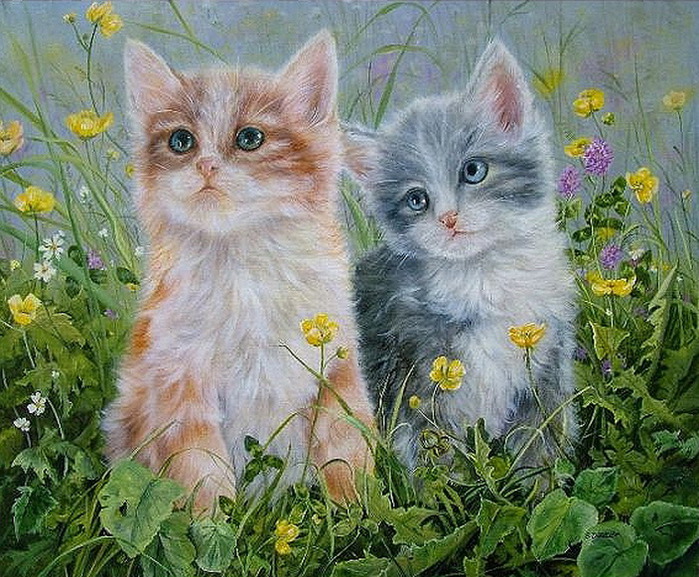
’удожник Shirley Deaville Site Toronto
ћетки: животные живопись художник анималистика |
уже ѕро ќсеннее.. |
Ёто цитата сообщени€ ƒиаскоп [ѕрочитать целиком + ¬ свой цитатник или сообщество!]
ћетки: пейзаж живопись .художники |
’удожница јнна ’омчик (Anna Homchik) |
Ёто цитата сообщени€ beauty_Nikole [ѕрочитать целиком + ¬ свой цитатник или сообщество!]
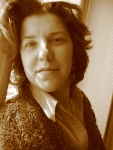
ќкончила факультет художественного проектировани€ в „ерновцах.
∆ивет и работает во Ћьвове.
ѕринимает активное участие в выставках на ”краине и за границей.
артины художницы наход€тс€ в частных колекци€х на ”краине и за рубежом.

ћетки: художники цветы живопись |
Hashimoto Fujico (‘уджико) |
Ёто цитата сообщени€ PKFNF [ѕрочитать целиком + ¬ свой цитатник или сообщество!]
–аботы Hashimoto Fujico
"–озы и земл€ника" есть схема дл€ вышивки крестом

ћетки: художники цветы живопись |
’удожница Vie Dunn-Harr |
Ёто цитата сообщени€ affinity4you [ѕрочитать целиком + ¬ свой цитатник или сообщество!]
Vie Dunn-Harr родилась в —Ўј в 1953 г., училась живописи в »талии. ќна считает себ€ современным реалистом, ее работы выставл€ютс€ в јмерике, ≈вропе и ћексике.


далее...
ћетки: художники цветы живопись |



























